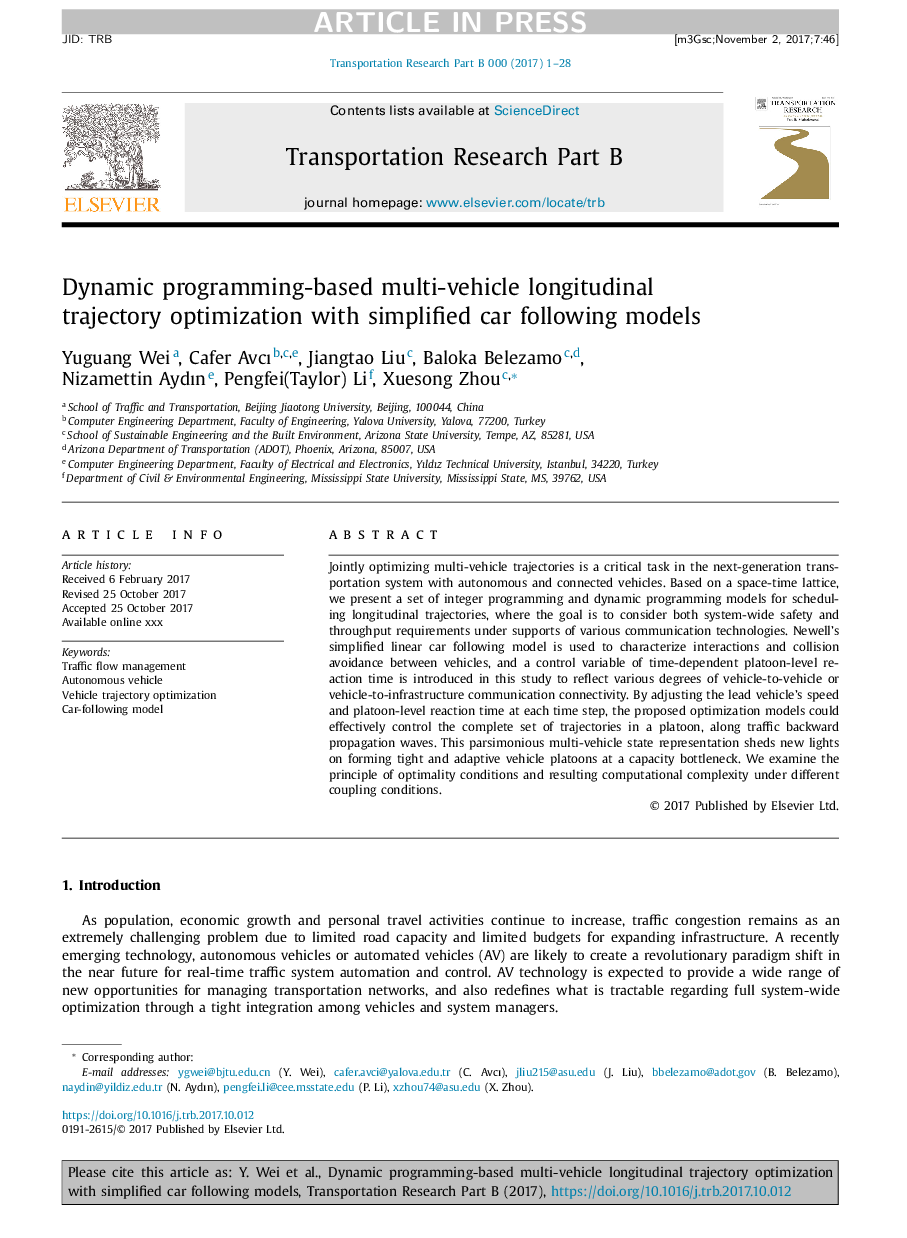ترجمه فارسی عنوان مقاله
بهینه سازی مسیریابی طولی چند منظوره مبتنی بر برنامه نویسی پویا با استفاده از مدل های ماشین ساده شده
عنوان انگلیسی
Dynamic programming-based multi-vehicle longitudinal trajectory optimization with simplified car following models
| کد مقاله | سال انتشار | تعداد صفحات مقاله انگلیسی |
|---|---|---|
| 111822 | 2017 | 28 صفحه PDF |
منبع

Publisher : Elsevier - Science Direct (الزویر - ساینس دایرکت)
Journal : Transportation Research Part B: Methodological, Volume 106, December 2017, Pages 102-129
ترجمه کلمات کلیدی
مدیریت جریان ترافیک، خودرو مستقل، بهینه سازی مسیر خودرو مدل خودرو،
کلمات کلیدی انگلیسی
Traffic flow management; Autonomous vehicle; Vehicle trajectory optimization; Car-following model;
ترجمه چکیده
به طور همزمان بهینه سازی مسیرهای چند وسیله نقلیه یک کار مهم در سیستم حمل و نقل نسل بعدی با وسایل نقلیه مستقل و متصل است. بر اساس یک شبکه فضا-زمان، ما مجموعه ای از برنامه های برنامه ریزی عدد صحیح و مدل های برنامه نویسی پویا را برای برنامه ریزی مسیرهای طولی ارائه می دهیم، جایی که هدف این است که هر دو مورد نیاز ایمنی و توانایی سیستم را در پشتیبانی از فن آوری های ارتباطی مختلف مورد توجه قرار دهیم. مدل خطی ساده ساده ی نیوئل برای مدل سازی تعاملات و جلوگیری از برخورد بین وسایل نقلیه استفاده می شود و یک متغیر کنترل زمان واکنش در سطح واحدی وابسته به زمان در این مطالعه معرفی شده است تا منعکس کننده های مختلفی از وسیله نقلیه به وسیله نقلیه یا وسیله نقلیه به خودرو ارتباطات زیربنایی اتصال. با تنظیم سرعت واکنش سرب و سطح واکنش سطح در هر مرحله، مدل های پیشنهادی بهینه سازی به طور موثر می توانند مجموعه ای کامل از مسیرها را در یک گروه در امتداد امواج انتشار مجدد ترافیک کنترل کنند. این نمایندگی دولتی چند وسیله نقلیه در حال سوختن چراغ های جدید در ایجاد تنگ وسایل نقلیه تنگ و تطبیقی در یک ظرفیت ظرفیت است. ما اصل شرایط مطلوبیت و پیچیدگی محاسباتی را تحت شرایط مختلف اتصال بررسی می کنیم.

